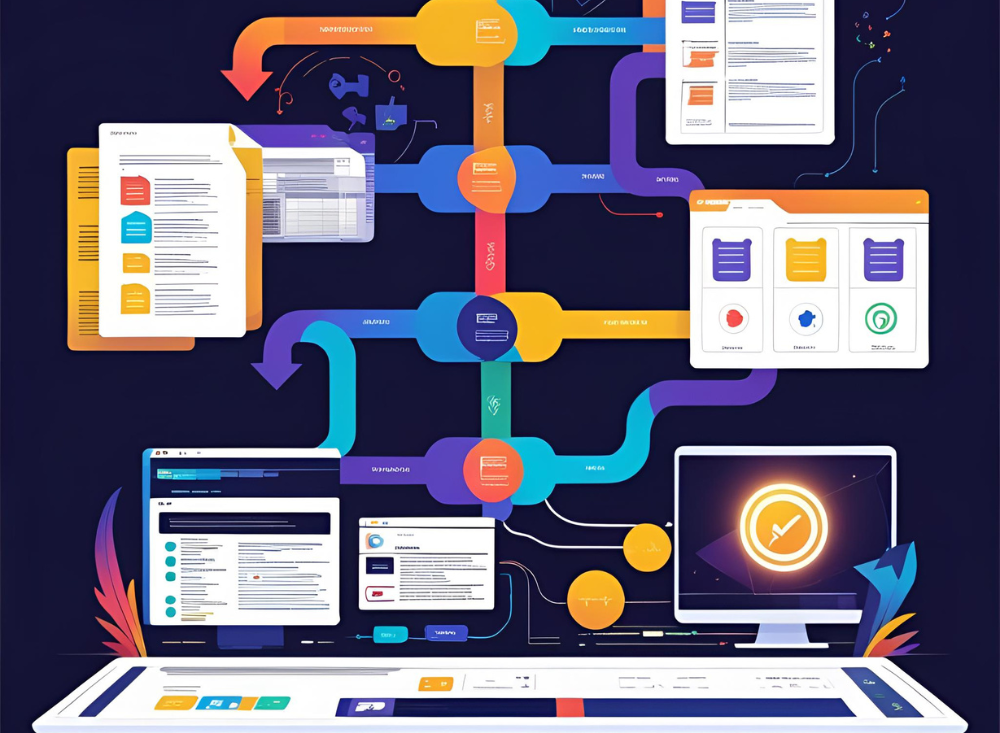
In the dynamic world of software development, transforming software requirements into reliable, tested solutions is a critical challenge. Requirements often evolve, and ensuring that the final product aligns with them while maintaining high quality demands an efficient and robust testing process. GenQE, an AI-powered testing platform, revolutionizes this journey by bridging the gap between requirements and tested solutions. This blog explores how GenQE streamlines the process, ensuring software meets expectations with speed, precision, and scalability.
The Challenge of Translating Requirements to Tested Solutions
Software requirements define the functionality, performance, and user experience expected from an application. However, translating these requirements into a fully tested product involves multiple hurdles:
- Complexity of Requirements: Requirements can be vague, complex, or subject to frequent changes, making test case creation time-consuming.
- Manual Testing Bottlenecks: Traditional testing relies heavily on manual effort, leading to delays and incomplete coverage.
- Evolving Applications: Frequent updates to code or UI can break existing tests, requiring constant script maintenance.
- Cross-Platform Needs: Modern applications must function seamlessly across web, mobile, and APIs, adding testing complexity.
GenQE addresses these challenges by leveraging artificial intelligence to automate and optimize the testing process, ensuring requirements are met with minimal effort and maximum accuracy.
How GenQE Turns Requirements Into Tested Solutions
GenQE, or Generative Quality Engineering, is an innovative platform that uses AI to transform software requirements into actionable, tested outcomes. By combining machine learning, natural language processing, and predictive analytics, GenQE simplifies the testing process while delivering high-quality results. Here’s how it works:
1. Automated Test Case Generation from Requirements
GenQE analyzes software requirements—whether written in plain English, technical specifications, or user stories—and automatically generates comprehensive test cases. Using natural language processing, it interprets requirements accurately, creating test scenarios that cover functional, edge, and negative cases. This eliminates the need for manual test design, saving time and ensuring alignment with the original requirements.
2. Self-Healing Test Scripts
Frequent changes in application UI or functionality can render traditional test scripts obsolete. GenQE’s self-healing technology automatically adapts test scripts to minor updates, such as modified element locators or UI layouts. This ensures tests remain valid and reliable, reducing maintenance overhead and keeping the testing process aligned with evolving requirements.
3. Risk-Based Testing Prioritization
Not all requirements are equally critical. GenQE’s AI-driven risk analysis identifies high-priority areas of the application that are most likely to impact functionality or user experience. By prioritizing test execution based on risk, GenQE ensures that critical requirements are thoroughly validated, reducing the chance of defects in production.
4. Cross-Platform Compatibility Testing
Modern applications must work seamlessly across web, mobile, and API platforms. GenQE supports cross-platform testing by generating and executing tests tailored to each environment. Its AI ensures consistent behavior and performance, verifying that requirements are met across all user touchpoints.
5. Predictive Defect Detection
GenQE goes beyond traditional testing by using predictive analytics to identify potential defects before they occur. By analyzing historical data, user behavior, and application patterns, it highlights areas prone to issues, allowing teams to address problems proactively and ensuring the final solution meets requirements.
6. Seamless Integration with Development Workflows
GenQE integrates effortlessly with CI/CD pipelines, enabling continuous testing in Agile and DevOps environments. This ensures that requirements are validated at every stage of development, from initial coding to final deployment, resulting in a tested solution that aligns with expectations.
Benefits of Using GenQE
By leveraging GenQE, teams can transform software requirements into tested solutions with unparalleled efficiency and quality:
- Faster Time-to-Market: Automated test generation and execution reduce testing time, enabling faster delivery of reliable software.
- Comprehensive Coverage: GenQE’s AI ensures test cases cover all aspects of requirements, including edge cases and complex scenarios.
- Reduced Maintenance Effort: Self-healing scripts minimize the need for manual updates, keeping tests aligned with changing applications.
- Cost Efficiency: Early defect detection and automation reduce testing costs and prevent expensive post-release fixes.
- Scalability: GenQE supports projects of all sizes, from startups to enterprises, across multiple platforms.
- User-Friendly Approach: Testers can create tests using plain English, making GenQE accessible to teams with diverse skill levels.
Why GenQE Is the Ideal Choice
GenQE stands out as a game-changer in software testing by combining AI-driven automation with a deep understanding of requirements. Unlike traditional tools that require extensive coding or manual intervention, GenQE simplifies the process, allowing teams to focus on delivering value rather than managing tests. Its ability to adapt to changes, prioritize critical tests, and support cross-platform validation makes it an essential tool for turning requirements into robust, tested solutions.
Real-World Impact of GenQE
Imagine a team tasked with developing a multi-platform e-commerce application with complex requirements for user authentication, payment processing, and mobile responsiveness. Using GenQE, the team can:
- Automatically generate test cases from user stories, covering login flows, payment gateways, and edge cases like failed transactions.
- Ensure tests remain valid despite frequent UI updates during development.
- Prioritize testing for high-risk areas, such as payment security, to meet critical requirements.
- Validate functionality across web, iOS, and Android platforms, ensuring a consistent user experience.
- Detect potential defects early, reducing the need for costly fixes after launch.
With GenQE, the team delivers a fully tested solution that meets all requirements, on time and within budget.
Conclusion
Turning software requirements into tested solutions is a complex but essential process in modern software development. GenQE empowers teams to overcome testing challenges by automating test creation, adapting to changes, and ensuring comprehensive validation. By leveraging AI, GenQE transforms requirements into high-quality, reliable software with minimal effort. Whether you’re building a simple app or a complex enterprise solution, GenQE is the key to delivering tested solutions that exceed expectations.
To discover how GenQE can streamline your testing process, visit genqe.ai.